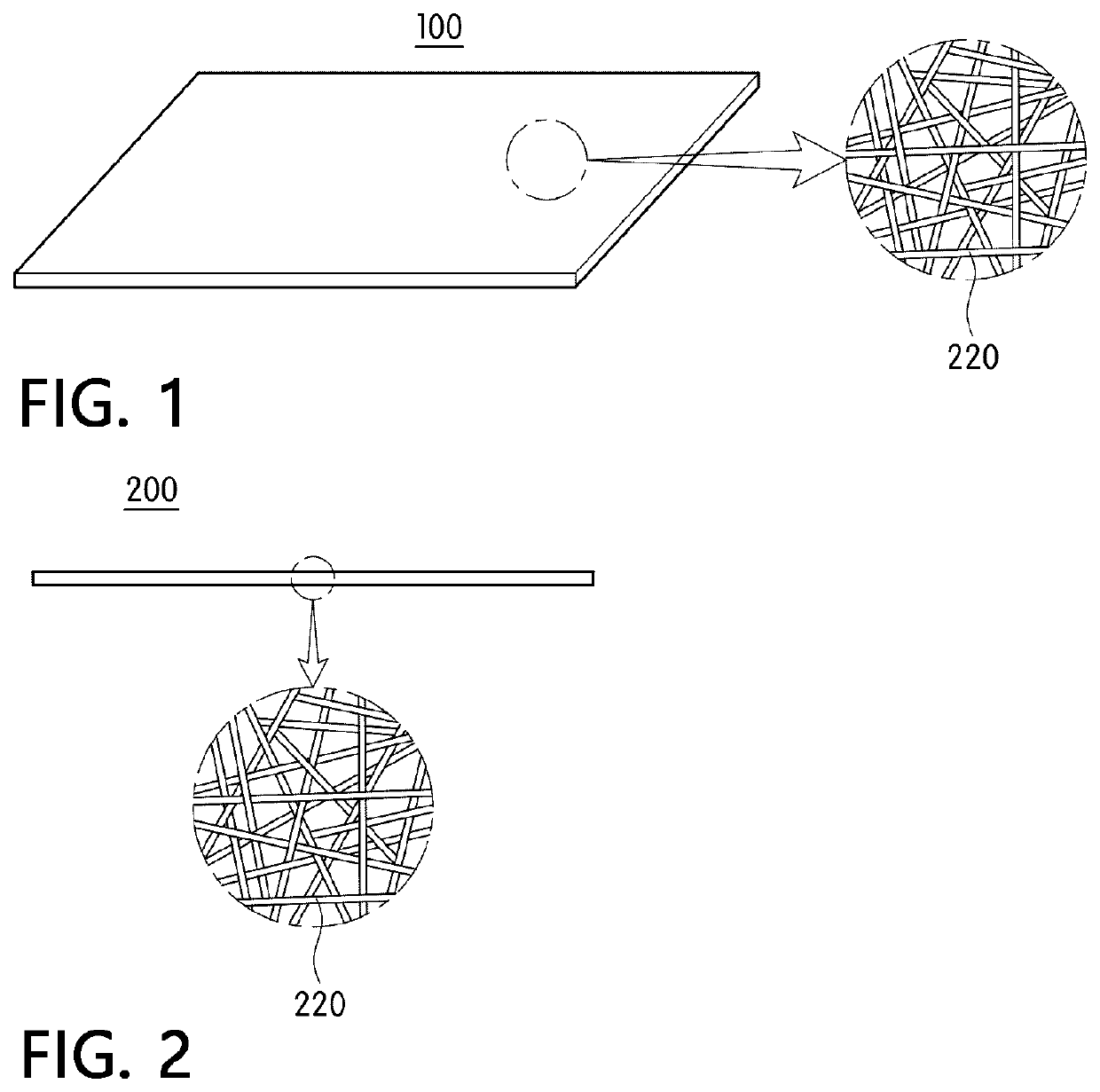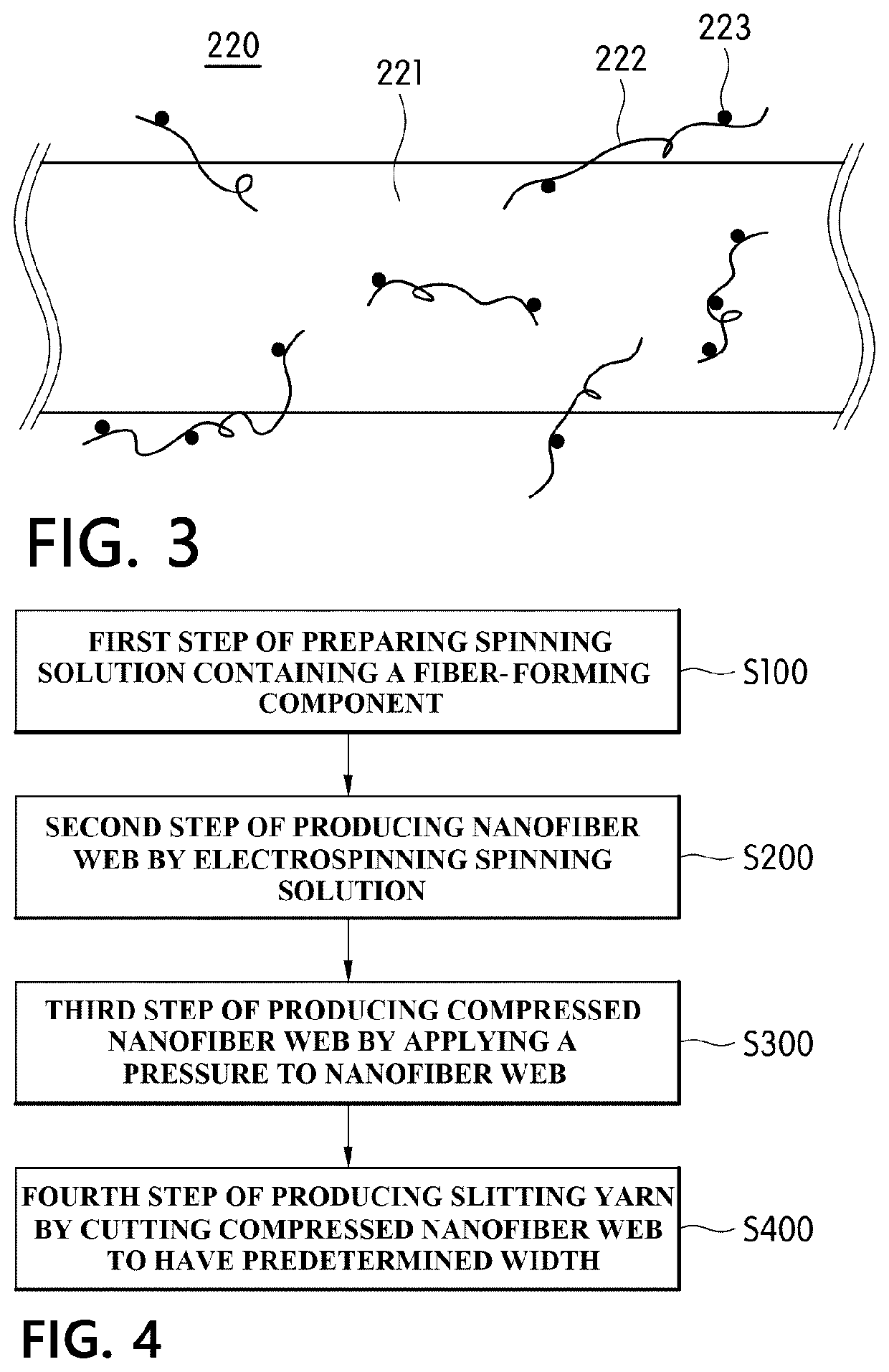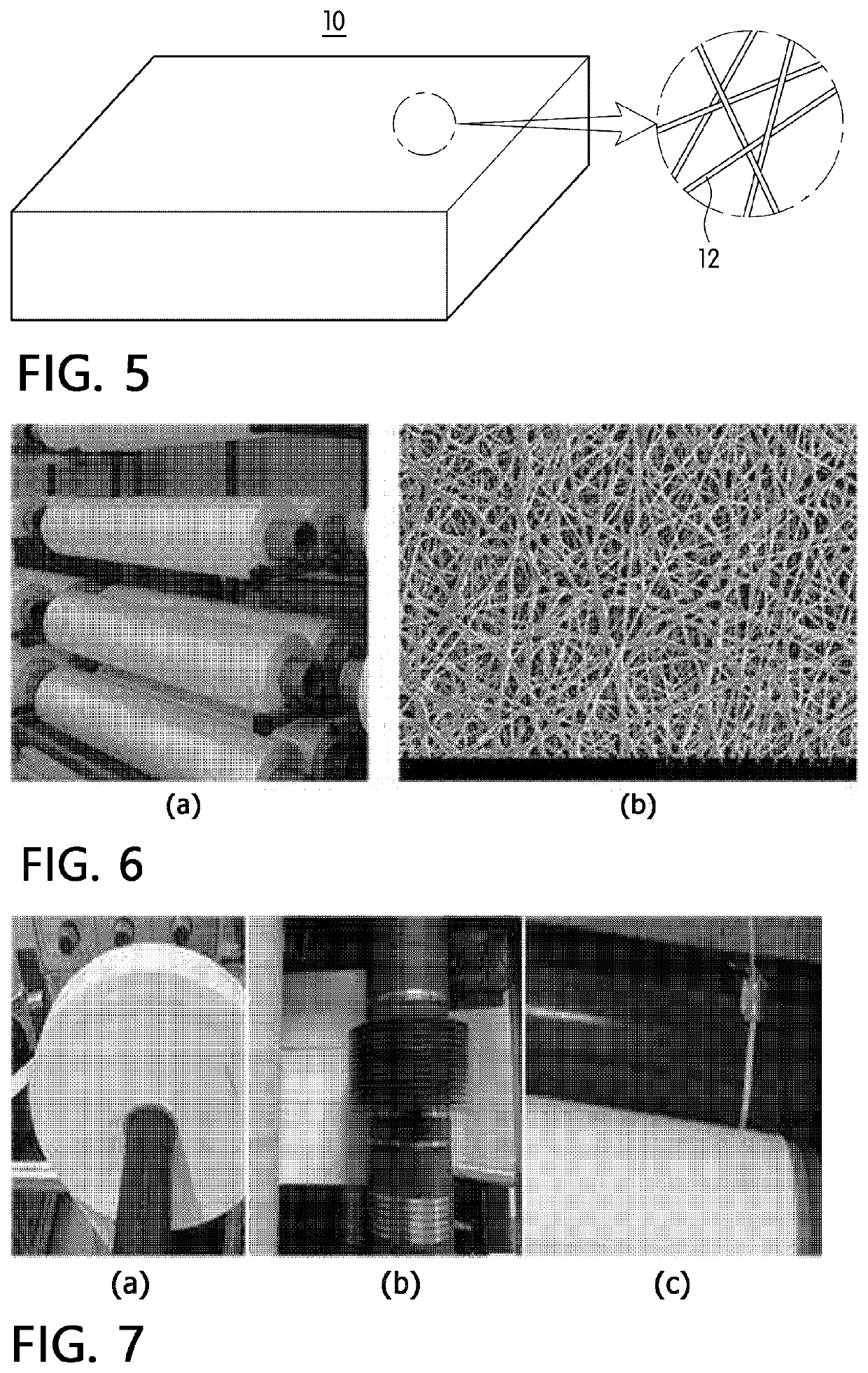Yarn for cell culture scaffold and fabric comprising the same
- Summary
- Abstract
- Description
- Claims
- Application Information
AI Technical Summary
Benefits of technology
Problems solved by technology
Method used
Image
Examples
example 1
[0095]First, to prepare a spinning solution, 12 g of polyvinylidene fluoride (Arkema, Kynar761) as a fiber-forming component was dissolved in 88 g of a mixed solvent prepared by mixing dimethylacetamide and acetone at a weight ratio of 70:30 using a magnetic bar at 80° C. for 6 hours, thereby preparing a mixed solution. A nanofiber web formed of a scaffold fiber with a diameter distribution as shown in Table 1 below was obtained by electrospinning of the prepared spinning solution using an electrospinning device under conditions of an applied voltage of 25 kV, a distance between a current collector and a spinning nozzle of 25 cm and a discharge amount of 0.05 ml / hole under an environment of an R.H. 65% and 30° C. The obtained nanofiber web was calendered twice at 130° C. and under a pressure of 4 kPa, thereby producing a compressed nanofiber web which has a three-dimensional network structure as shown in FIG. 6B, a basis weight of 10 g / m2 and a thickness of 10 μm, and the produced c...
example 2 to 6
[0097]Slitting yarns were produced as shown in Table 3 below by the same method as described in Example 1, except that a compressed nanofiber web was produced to have a basis weight and a thickness as shown in Table 3 below by controlling the basis weight / thickness of a nanofiber web before compression and the intensity of a pressure in compression.
experimental example 1
[0099]A diameter distribution of scaffold fibers in the nanofiber web with respect to the nanofiber web before slitting in Examples and the comparative example was measured.
[0100]Specifically, an average diameter and the standard deviation of the diameter of the scaffold fiber were calculated using the diameter distribution of the scaffold fibers measured by a method according to a fiber diameter program (developed by AMOGREENTECH Co., Ltd.), and the average diameter and dispersion coefficient are shown in Table 3.
PUM
| Property | Measurement | Unit |
|---|---|---|
| Diameter | aaaaa | aaaaa |
| Diameter | aaaaa | aaaaa |
| Fraction | aaaaa | aaaaa |
Abstract
Description
Claims
Application Information
 Login to View More
Login to View More - R&D
- Intellectual Property
- Life Sciences
- Materials
- Tech Scout
- Unparalleled Data Quality
- Higher Quality Content
- 60% Fewer Hallucinations
Browse by: Latest US Patents, China's latest patents, Technical Efficacy Thesaurus, Application Domain, Technology Topic, Popular Technical Reports.
© 2025 PatSnap. All rights reserved.Legal|Privacy policy|Modern Slavery Act Transparency Statement|Sitemap|About US| Contact US: help@patsnap.com



